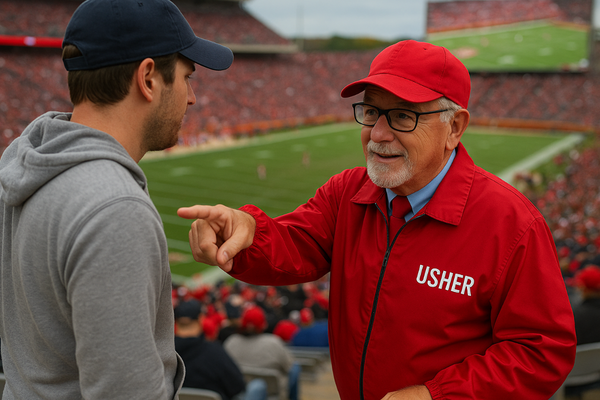3 Reasons Why Great Leaders Manage Individuals, Not Just Teams

Too often, young or inexperienced managers fall into the trap of treating their team as a monolith—where everyone is expected to think, perform, and respond in the same way. Expectations are replicated from one account executive to the next, and recognition—whether it’s awards, shoutouts, or incentives—follows a uniform script. While this approach may feel efficient on the surface, it often results in disengagement, frustration, and turnover. In the high-stakes world of ticket sales and sports business, where performance and morale go hand in hand, this strategy can sink a department fast.
The best leaders know better. They reject the one-size-fits-all model and take a more personalized approach to leadership. By managing individuals—not just the team—they create an environment where people feel valued, understood, and empowered to succeed.
Here are three core strategies that set exceptional leaders apart:
1. They Get to Know the Person Behind the Role
Strong leaders don’t just know their reps by name and title—they understand who they are as people. That means going beyond basic job functions to learn about each team member’s background, family, interests, and values. These personal touchpoints aren’t just about being friendly; they foster a deeper sense of connection and trust.
When team members feel seen and appreciated as individuals, their engagement skyrockets. A rep who knows their manager genuinely cares is more likely to go the extra mile—whether that’s staying late to close a deal, jumping in to help a teammate, or contributing ideas to improve the department.
Leaders can start building these relationships through regular one-on-ones, informal check-ins, and team bonding events that prioritize authenticity over performance. Some front offices even build time into onboarding to have new hires share personal milestones, values, or career goals—a move that pays off long-term in loyalty and retention.
2. They Understand What Motivates Each Individual
Recognition and motivation are not universal currencies. What inspires one team member might fall flat with another. The best managers know how to recognize talent in a way that truly resonates—whether it’s a private thank-you note, a shoutout in a team meeting, or a tangible reward like career development opportunities or extra PTO.
Understanding motivation starts with curiosity. Great leaders ask the right questions:
- “What type of recognition means the most to you?”
- “What goals are you working toward professionally and personally?”
- “What challenges get you fired up, and which ones drain you?”
Armed with this insight, managers can craft incentives that hit home. For example, one account executive might be driven by a chance to lead a high-profile project, while another is laser-focused on earning a promotion or bonus. Knowing the difference—and responding accordingly—can unlock major performance gains.
Teams across the league are embracing this individualized mindset. The Sacramento Kings, for instance, implemented personalized performance plans tied to both KPIs and individual motivators, resulting in improved morale and reduced turnover year-over-year.
3. They Tailor Expectations to the Individual
Shared standards are important, but elite leaders know when and how to customize. That means setting goals that are realistic, motivating, and aligned with each team member’s skillset and stage of development.
In a ticket sales environment, one rep might be in year three, thriving off relationship-building and closing premium packages through networking events. Another might be fresh out of school, learning the ropes of cold calling and still building confidence. Treating these two individuals the same—using identical goals, scripts, or timelines—would be a recipe for underperformance or burnout.
Instead, the most effective leaders align expectations with individual strengths and growth areas. They use performance data and coaching insights to shape strategies that meet reps where they are while still driving toward overall team goals.
This doesn’t mean lowering the bar. It means creating multiple paths to success—and recognizing that not everyone climbs the same ladder the same way.
Leading with Intention—and Seeing the Payoff
Managing the individual takes time, energy, and emotional investment. It means carving out space for meaningful one-on-ones, committing to open communication, and staying dialed in to each team member’s journey. It also requires a shift in mindset—from being a task manager to being a talent developer.
But the payoff is undeniable.
When employees feel valued and supported as individuals, they perform better, stay longer, and contribute more creatively. Teams led this way are more agile, more resilient, and more aligned. And for organizations in the business of selling experiences—like tickets to the big game—that kind of cohesion is the ultimate competitive advantage.
Great leaders don't just manage teams. They coach individuals. And that's how they build all-star departments.




